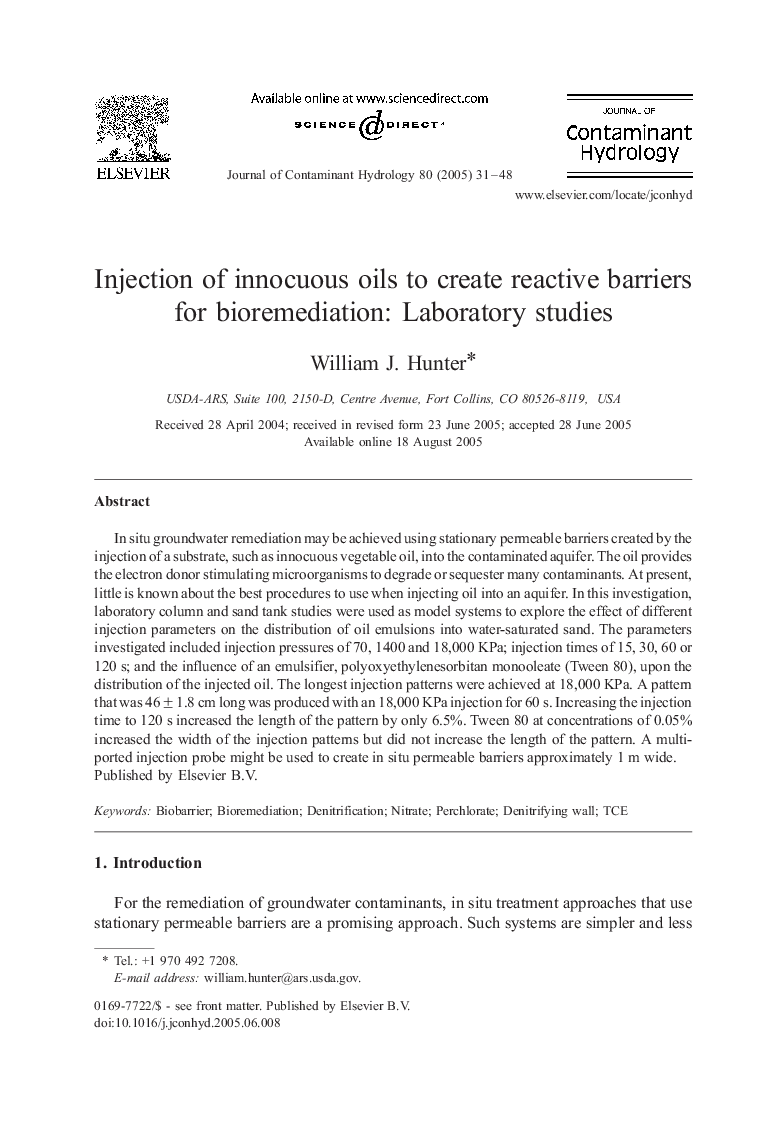| Article ID | Journal | Published Year | Pages | File Type |
|---|---|---|---|---|
| 9482793 | Journal of Contaminant Hydrology | 2005 | 18 Pages |
Abstract
In situ groundwater remediation may be achieved using stationary permeable barriers created by the injection of a substrate, such as innocuous vegetable oil, into the contaminated aquifer. The oil provides the electron donor stimulating microorganisms to degrade or sequester many contaminants. At present, little is known about the best procedures to use when injecting oil into an aquifer. In this investigation, laboratory column and sand tank studies were used as model systems to explore the effect of different injection parameters on the distribution of oil emulsions into water-saturated sand. The parameters investigated included injection pressures of 70, 1400 and 18,000 KPa; injection times of 15, 30, 60 or 120 s; and the influence of an emulsifier, polyoxyethylenesorbitan monooleate (Tween 80), upon the distribution of the injected oil. The longest injection patterns were achieved at 18,000 KPa. A pattern that was 46 ± 1.8 cm long was produced with an 18,000 KPa injection for 60 s. Increasing the injection time to 120 s increased the length of the pattern by only 6.5%. Tween 80 at concentrations of 0.05% increased the width of the injection patterns but did not increase the length of the pattern. A multi-ported injection probe might be used to create in situ permeable barriers approximately 1 m wide.
Related Topics
Physical Sciences and Engineering
Earth and Planetary Sciences
Earth-Surface Processes
Authors
William J. Hunter,
